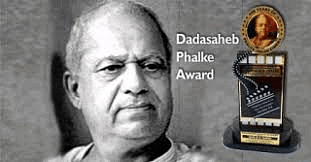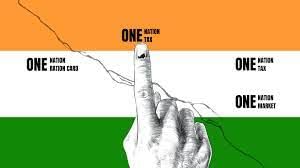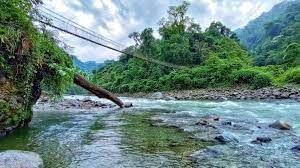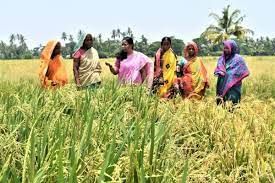UPSC Daily Current Affairs- 28th September 2023 | Current Affairs & Hindu Analysis: Daily, Weekly & Monthly PDF Download
GS-I
53rd Dadasaheb Phalke Lifetime Achievement Award
Subject: Art and Culture

Why in News?
Bollywood actress Waheeda Rehman will be conferred with the Dadasaheb Phalke Lifetime Achievement Award for the year 2021.
Waheeda Rehman
- Waheeda Rehman has been critically acclaimed for her roles in Hindi films, prominent among them, Pyaasa, Kaagaz ke Phool, Chaudhavi Ka Chand, Saheb Biwi Aur Ghulam, Guide, Khamoshi and several others.
- She was honored with the Padma Shri by the Government of India in 1972, later receiving the Padma Bhushan in 2011. She won the National Award for Best Actress in 1971.
Dadasaheb Phalke Award
- Criteria: It is India’s highest award in the field of cinema. The recipients are honored for their “outstanding contribution to the growth and development of Indian cinema.”
- By whom: It is presented annually at the National Films Awards ceremony by the Directorate of Film Festivals, an organization set up by the Ministry of Information and Broadcasting.
- Cash Prize: The Award comprises a Swarna Kamal (Golden Lotus) medallion, a shawl, and a cash prize of Rs. 10 lakh.
- First recipient: The first recipient of the award was actress Devika Rani, who was honored in 1969.
- Recent recipients: Waheeda Rehman (2021), Asha Parekh (2020), Rajinikanth (2019), Amitabh Bachchan (2018), Vinod Khanna (2017).
Dadasaheb Phalke:
- The award is named after Dhundiraj Govind Phalke, popularly known as Dadasaheb Phalke (1870–1944),
- He was an Indian producer-director-screenwriter, and is regarded as “the Father of Indian cinema”.
- He directed India’s first full-length feature film, Raja Harishchandra (1913).
Source: PIB
Annular solar eclipse
Subject: Geography

Why in News?
The Moon will appear as a dark disk superimposed on the larger, bright face of the sun, forming a glowing ring or "ring of fire."
About Annular solar eclipse:
- It is often referred to as the "ring of fire.
- This eclipse happens when the moon is at or near its farthest point from Earth in its orbit.
- The moon appears smaller than the sun in the sky and does not fully cover it, creating a striking visual effect.
- The moon appears as a dark disk superimposed on the larger, bright face of the sun, forming a glowing ring or "ring of fire."
- The path of this upcoming eclipse will span several countries in North, Central, and South America.
Types of eclipses
- Total solar eclipse: It happens when the sun, moon and Earth are in a direct line. The dark silhouette of the Moon completely covers the intense bright light of the Sun. Only the much fainter solar corona is visible during a total eclipse which is known as a Totality.
- Partial solar eclipse: It happens when the shadow of the moon appears on a small part of the sun.
Source: India Today
GS-II
DSP Pension Fund Managers for NPS
Subject: Polity and Governance

Why in News?
PFRDA is in the process of appointing DSP Pension Fund Managers as the 11th fund manager permitted to manage retirement savings under the National Pension System (NPS).
About DSP Pension Fund Managers
- PFRDA granted the certificate of registration to DSP Pensions, making it the country’s 11th pension fund manager of NPS.
- DSP Pensions is starting its pension fund management journey with a capital of ₹ 60 crore (regulatory stipulation of minimum capital is ₹ 50 crore).
- DSP Pensions is set to commence business at a time when the overall assets under management (AUM) of the NPS and Atal Pension Yojana combined together in the country crossed the ₹ 10 lakh crore mark.
The National Pension System (NPS)
- It has been implemented for all Government Employees (except armed forces) joining Central Govt. on or after 1st January 2004. Most of the State/UT Governments have also notified the National Pension System (NPS) for their new employees.
- NPS has been made available to every Indian Citizen from 1st May 2009 on a voluntary basis.
- It is being administered and regulated by Pension Fund Regulatory and Development Authority (PFRDA) set up under PFRDA Act, 2013.
- The number of subscribers under the National Pension System (NPS) and Atal Pension Yojana (APY) together have grown to more than 6.62 crore and the total Asset Under Management (AUM) has reached Rs. 10 lakh crore (Rs. 10,00,000 crore).
Features
- NPS is a market linked, defined contribution product.
- Under NPS, a unique Permanent Retirement Account Number (PRAN) is generated and maintained by the Central Recordkeeping Agency (CRA) for individual subscribers.
- NPS offers two types of accounts, namely Tier-I and Tier-II.
- Tier-I account is the pension account having restricted withdrawals. Tier-II is a voluntary account which offers liquidity of investments and withdrawals.
- NPS can be subscribed by any Indian citizen (resident/non-resident/overseas) aged between 18-70 years on a voluntary basis.
- An NRI can open an NPS account. Contributions made by NRI are subject to regulatory requirements as prescribed by RBI and FEMA from time to time.
- Hindu Undivided Families (HUFs) and Persons of Indian Origin (PIOs) are not eligible for subscribing to NPS.
Source: The Hindu
One Nation, One Election – wrong problem, bad solution
Subject: Polity

Why in News?
The Center has taken a significant step towards implementing the One Nation, One Election concept by forming a committee led by former President Ram Nath Kovind.
Central idea
- The recently concluded special session of Parliament has brought into focus the idea of One Nation, One Election as a means to address the challenges posed by frequent elections in India. While this proposal has gained attention, it requires thorough examination and data-driven deliberation before any decisive steps are taken.
What is the ONOE plan?
- Concept: The ONOE plan aims to synchronize the timing of the Lok Sabha and State Assembly elections across all states in India to reduce the frequency of election cycles nationwide.
- Historical Context:
- After the enforcement of the Constitution on January 26, 1950, the first-ever general elections for both the Lok Sabha and State Assemblies occurred simultaneously in 1951–1952.
- This practice continued for the following three Lok Sabha elections until 1967, streamlining the election process.
- Disruption:
- In 1959, the cycle was disrupted as the Central government invoked Article 356 of the Constitution, leading to the dismissal of the Kerala government due to a perceived failure of constitutional machinery.
- Subsequent to 1960, defections and counter-defections among political parties led to the dissolution of several state legislative assemblies.
- This fragmentation resulted in separate election cycles for the Lok Sabha and state assemblies.
- Current Scenario: Presently, only specific states such as Arunachal Pradesh, Sikkim, Andhra Pradesh, and Odisha conduct their assembly polls concurrently with the Lok Sabha elections.
Critical analysis
Excessive Expenditure: A Questionable Concern
- Rising Election Costs: The cost of elections has been steadily increasing. In 2019, the expenditure for the general elections was about Rs 9,000 crore, averaging about Rs 100 per voter.
- Political Party Spending: Political parties spent nearly Rs 3,000 crore during the 2019 Lok Sabha elections, with an estimated Rs 50,000 crore informally spent. Addressing this informal expenditure is a primary concern.
- Data-Driven Decision-Making: The absence of comprehensive data on total public expenditure for separate versus simultaneous elections limits our understanding. To make informed decisions, a meticulous analysis of costs and potential savings is imperative.
Diversion of Duty: A Matter of Debate
- Essential Responsibility: While election duty is considered essential for security forces, it’s also a privilege for civilian officials.
- Lack of Statistical Data: The absence of statistical data showing the exact number of days dedicated to election duties for simultaneous versus separate elections hinders informed decision-making.
Disruption in Development: A Misconception
- Model Code of Conduct (MCC): The MCC primarily restricts certain categories of public expenditure during elections, not all development work.
- Need for Data: The lack of data demonstrating the extent of disruption in development work is a crucial gap in the argument against simultaneous elections.
- Historical Perspective: Flexibility in Democracy
Historical context reveals flexibility in Indian democracy:
- 15 Years of Simultaneous Elections: From 1951–52 to 1967, elections were held simultaneously for 15 years without a specific constitutional provision.
- Preserving Political Freedom: Imposing limits on election timing could curb political parties’ freedom to express a lack of confidence or engage in democratic processes.
Local autonomy vs. centralization
- Local Impact: State-level elections primarily concern local voters and leaders and should not unduly affect voters in other states or the central government.
- Centralization of Politics: Centralized campaigning diminishes the focus on local governance, weakening local democratic institutions and representation.
Urgent Priorities for Reform
- Pressing Issues Abound: India faces a multitude of pressing issues, from natural disasters to public agitations. These challenges can disrupt normal governance and require immediate attention.
- Nature’s Fury: Natural disasters, such as heavy rainfall or hazardous air quality, often paralyze regions and demand swift government response to alleviate suffering and manage the aftermath.
- Educational Disruptions: Factors like heatwaves or international events like the G20 meetings can lead to the closure of educational institutions, affecting students’ routines and demanding educational policy adjustments.
- Protracted Agitations: Protests and agitations, sometimes lasting for months, can bring normal life to a standstill, necessitating government intervention and resolution.
- Meaningful Electoral Reforms: Rather than focusing on the mechanical scheduling of elections, there is an urgent need for more substantial electoral reforms that enhance transparency and accountability.
- Managerial Efficiency: Improving the efficiency of election management can be achieved without the need for onerous constitutional amendments.
Conclusion
- The proposal for ONOE is intriguing but lacks the necessary data and robust debate to support its implementation. India should prioritize addressing more pressing governance issues and electoral reforms that enhance transparency.
Source: Indian Express
GS-III
Kamlang Tiger Reserve
Subject: Environment and Ecology

Why in News?
20 Different Butterfly Species Identified And Recorded At Kamlang Tiger Reserve.
About Kamlang Tiger Reserve
- Location: It is located in the southeastern part of Lohit District in Arunachal Pradesh near the border with Myanmar.
- It is named after the Kamlang River, which flows through the reserve and joins the Brahmaputra.
- It is spread between the famed Namdapha National Park on its south and Lang River on its north.
- The local inhabitants are Hishmi, Digaru and Mizo.
- Landscape: It encompasses a diverse range of landscapes, including dense tropical forests, grasslands, rivers, and hills.
- Climate: It enjoys a sub-tropical climate as it falls within the sub-tropical zone.
- Vegetation:
- The vegetation may broadly be classified into tropical, temperate and alpine.
- The lower reaches and foothills of the region are covered with tropical wet evergreen forests, while the alpine vegetation dominates the higher altitudes.
- Flora: Common species of trees in the reserve include Ammora wallichi (Amari), Gmelina arborea (Gamari), Terminalia chebula (Hillika), Canarium resigniferum (Dhuna) and many others.
- Fauna:
- All four big cats, including the Snow Leopard, Clouded Leopard, Leopard and Tiger, are the common inhabitants.
- Certain endangered species, such as Himalayan Palm Civets, Leopard Cat, Slow Lories and Hoolock Gibbon, can also be spotted in the sanctuary.
- Other species commonly found here are Giant and Flying Squirrels, Hornbills, Deer, Civets, Boar, Capped Langur, Stump Tailed Macaque etc.
Source: DTE
Promoting Heat-Resilient and High-Yielding Varieties of Wheat
Subject: Economy

Why in News?
The Centre has asked States to promote heat resilient and high yielding varieties of wheat among farmers.
About
- The National Conference on Agriculture for Rabi Campaign 2023-24 was held recently.
- The conference was to review crop performance during the preceding crop seasons and fix crop-wise targets for the rabi season in consultation with State governments, and prepare a roadmap to ensure supply of critical inputs and facilitate adoption of innovative technologies to enhance production.
Promoting a Heat-Resistant Variety of Wheat
- The Centre is targeting an increase in the coverage of area under heat-tolerant wheat varieties to 60% this season.
- The wheat varieties DBW187 and DBW222 have been found superior over HD-3086 as far as heat tolerance is concerned.
- The HD 3385 variety has been developed to not only make the crop tolerant to heat stress, but also increase the yield.
- Notably, another heat-resistant variety of the crop, HI 1636 or ‘Pusa Bakula’ that the ICAR released last year, has a yield potential of 72 quintal per hectare
Significance
- The development of this new wheat variety is particularly important given the increasing frequency of heatwaves in the region due to climate change.
- With rising temperatures, it is becoming more challenging for farmers to grow crops.
Source: PIB
Norman Borlaug Field Award to Indian Researcher
Subject: Economy

Why in News?
Swati Nayak, a scientist at the International Rice Research Institute (IRRI) South Asia Regional Centre (ISARC), has been honoured with the Borlaug Field Award by the World Food Prize.
- She is renowned for her groundbreaking research in developing climate-resilient and nutrition-rich rice varieties.
Contributions of Dr. Swati Nayak
| Extensive Testing | Organized over 10,000 tests, evaluating 500+ seed varieties. |
| Climate Resilient Varieties | Developed high-yield, biofortified, and nutritionally enhanced rice varieties. |
| Small Holder Farmers’ Focus | Innovated inbred rice varieties to benefit smallholders. |
| Collaborative Efforts | Collaborated with national and international organizations. |
| Addressing Lifestyle Diseases | Advocates for low glycemic index, micronutrient-enriched rice varieties. |
| Supporting Better Quality | Empowers farmers to produce high-quality seeds for better market positioning. |
| Biofortified Foodgrains | Promotes affordable bio-fortified rice as a nutritional solution. |
Who was Norman Borlaug (1914-2009)?
| Contributions | Developed high-yielding, disease-resistant wheat varieties, “Father of the Green Revolution” |
| Impact | Saved over a billion people from hunger, significantly increased global wheat production |
| Awards and Honors | Nobel Peace Prize, Presidential Medal of Freedom, Congressional Gold Medal, Padma Vibhushan, and more |
| Legacy | Laid the foundation for modern agricultural practices, inspired efforts to address global food security |
About Borlaug Field Award
| Endowed by | Rockefeller Foundation |
| Presented by | World Food Prize Foundation |
| Purpose | Recognize outstanding contributions in international agriculture and food production by individuals under 40. |
| Award Amount | $10,000 |
| Inspiration | Honors Dr. Norman Borlaug’s dedication to fighting global hunger and poverty during his early career in Mexico. |
| Establishment Year | 2011 |
Source: The Hindu
|
38 videos|5264 docs|1112 tests
|
FAQs on UPSC Daily Current Affairs- 28th September 2023 - Current Affairs & Hindu Analysis: Daily, Weekly & Monthly
| 1. What is the 53rd Dadasaheb Phalke Lifetime Achievement Award? |  |
| 2. What is an annular solar eclipse? |  |
| 3. What is DSP Pension Fund Managers for NPS? |  |
| 4. Why is "One Nation, One Election" considered a wrong problem with a bad solution? |  |
| 5. What is the Kamlang Tiger Reserve? |  |
















